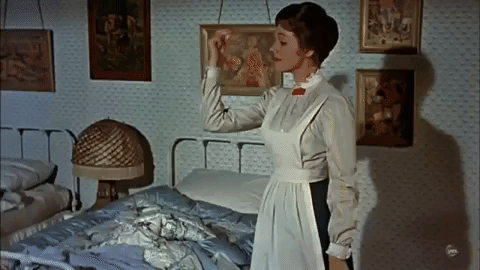“In every job that must be done, there is an element of fun. You find the fun and - SNAP - the job's a game.”
Those words of wisdom from Mary Poppins are backed by science that finds that when people are interested and engaged in a subject, they enjoy a shot of dopamine to the brain. Marketers can capitalize on that effect when utilizing gamification to engage customers and deliver a fun experience that associates warm and fuzzy feelings with a brand.
Home decor and shopping get gamified
Design Home: House Renovation is the name of the game. That offers an irresistible combination of video games and shopping.
Some of the pieces can be purchased virtually for the game alone. But the real big money would come through buying actual sofas, rugs, tables, etc. for one’s real life home. And that would be quite the payoff for the affiliated sellers and brands.
This is marketing that doesn’t feel like marketing because it draws the shopper in through active play. To get players even more motivated, it offers“Daily Design Challenges.” There is also a social aspect to it with voting on rooms and the possibility of borrowing from friends through the Facebook connection.
FOMO or an addictive component is also baked in with the possibility of advancing levels, gaining access to unlocked rewards, and the promise of discovery of “brands and trends,” as well as the “new pieces added every day.”
Generating excitement for new offerings
Building on brand loyalty is fundamental for sustained business. When you add in a crossover with another brand associated with play, you can add some fun to that fundamental strategy.
Adidas did that in partnering with LEGO for a range of products.
This past spring, when it introduced its Adidas Ultraboost DNA X Lego Plates shoes, priced at $200. While the collaboration alone generated buzz, LEGO pushed for even more engagement by sharing ideas for customizing the shoes on the “adults welcome” section of its site.
See 6 incredible ways to customize your LEGO® adidas Originals Superstar for ways sneaker collectors, designers, and just creative people who wish to share their passions on their feet found to use the shoes as a medium for imaginative arrangements. The idea is to inspire others to follow suit, engage more with the shoes and the possibilities inherent in connecting LEGO bricks.
Promoting products via virtual games
Speaking of LEGO and gamification, the brand aims to engage kids with a section of its site showcasing LLEGO® video games available for PC, PlayStation, Xbox, Nintendo Switch™ and other consoles.. Those are searchable by theme, which also leads to all related products.
For example, the Star Wars will direct you to the Rise of Skywalker game, where you could choose to be on the light or dark side. It also leads you to a view of the many LEGO characters and sets within the Star Wars universe. The same holds true for other themes for which there are many sets available.
LEGO also offers a range of apps, some of which are specifically designed to bridge the virtual game and the physical world. Among these offerings is what is called “EGO Hidden Side,” which promises live participation in a ghost story that can involve a number of players..
Playing the game of FOMO
For its 25th anniversary, Pokémon collaborated with OREO to Issue a limited-edition collectible cookie that generates FOMO. The 16 distinctive Pokémon designs are promoted as collectible, motivating customers to buy multiple packages to be sure they get them all.
The OREO site warned fans of the cookie or the game that only some the limited edition packages will have all 16 version inside. And to truly complete their collections, they will have to buy enough to even obtain the “super rare Mythical Pokémon.”
I Infusing new life into an old product
 |
| Mary Poppins using a magic snap to clean up the room |
Gamification elements like AR can also be used to revitalize interest in a product that is usually not front-and-center of a person’s cooking experience. Table salt is a good example of that.
Nearly all of us use some in cooking and baking but don’t think all that much about the brand involved. Morton Salt wanted to get their attention, particularly as more people were taking up cooking at home when not eating out during the pandemic.
To that end, the brand introduced an integrated marketing campaign across all channels combined with QR codes on labels to activate an AR experience. That idea was to give customers “several fun and educational ways” to engage with the brand.
You can see the short video about it here: https://www.facebook.com/watch/?v=1091572674646934
For a warning about how just jumping on the gaming bandwagon can backfire --as it did for Coke -- see Major Marketing Missteps from Adidas, M&M's, and Coke







No comments:
Post a Comment